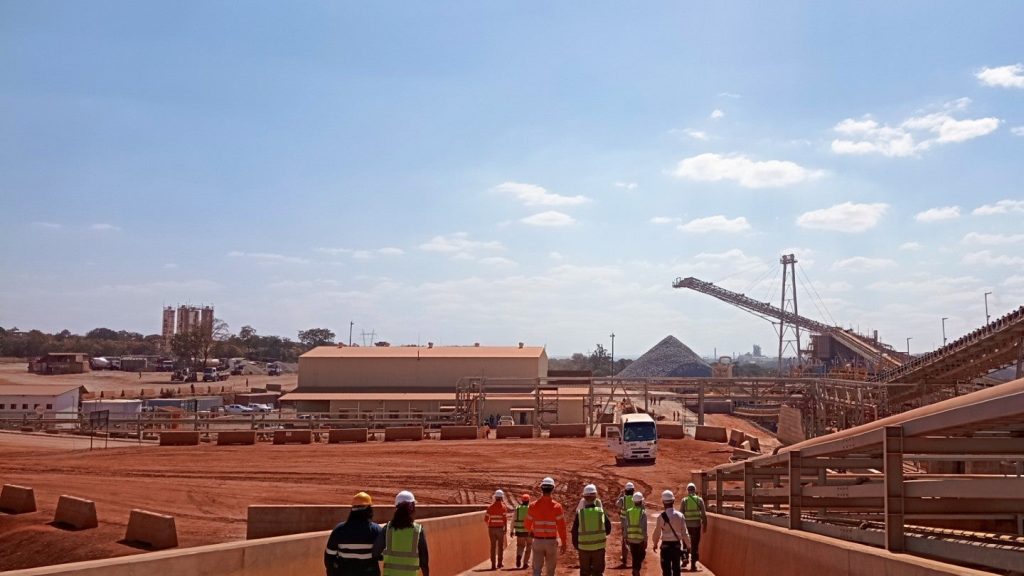In a significant milestone for Zambia’s mining sector, First Quantum Minerals (FQM) officially unveiled its $1.25 billion Sulphide-3 (S3) expansion at the Kansanshi copper mine on August 19. The ceremony, attended by President Hakainde Hichilema and FQM executives, marked one of the country’s largest mining investments in over a decade.
The ambitious expansion represents a crucial step in Zambia’s strategy to more than triple its copper production by 2030. The country has alrea
...
In a significant milestone for Zambia’s mining sector, First Quantum Minerals (FQM) officially unveiled its $1.25 billion Sulphide-3 (S3) expansion at the Kansanshi copper mine on August 19. The ceremony, attended by President Hakainde Hichilema and FQM executives, marked one of the country’s largest mining investments in over a decade.
The ambitious expansion represents a crucial step in Zambia’s strategy to more than triple its copper production by 2030. The country has already shown promising growth, with production increasing by 14% in 2024 to approximately 820,000 tonnes.
Located in Zambia’s copper-rich North-Western Province, the Kansanshi operation stands as one of Africa’s largest copper mines. The S3 expansion, which began in 2023, addresses the challenge of accessing deeper, lower-grade sulphide ore with a new 25 million tonnes per annum (mtpa) processing plant scheduled to begin operations in late 2025.
Once fully operational by 2029, the expansion will boost Kansanshi’s annual output to approximately 280,000 tonnes. Combined with production from FQM’s Sentinel mine, this will deliver around 480,000 tonnes annually by 2027—a significant 93,000-tonne increase from 2023 levels.
“The journey at S3 is only the latest chapter. Indeed, this project is part of a 30-year journey that First Quantum has shared with the people of Zambia,” said FQM CEO Tristan Pascall during the opening ceremony. “Over three decades, we have invested not only in world-class mining assets but also in the careers, local companies, institutions and communities that surround them.”
The expansion extends Kansanshi’s operational life to at least 2044, with mining activities projected to continue until 2049. With 1.5 billion tonnes of ore already extracted and 3.6 billion tonnes remaining, the mine represents a long-term asset for both FQM and Zambia. Investment in the expansion has accelerated in 2024, with more than $800 million spent, bringing total expenditure to $1.1 billion. The remaining $900 million will be invested by 2029.
Beyond production increases, the project will create approximately 900 permanent jobs across various sectors including engineering, maintenance, mining, processing, smelting, and support services—reinforcing its broad economic impact in the region.
FQM’s relationship with Zambia dates back to 1996, beginning with the acquisition of the Bwana Mkubwa copper mine in Ndola, which operated until 2011. The company expanded its presence in 2001 by acquiring an 80% stake in Kansanshi, bringing it to commercial production by 2005. A significant milestone followed in 2014 with the construction of the Kansanshi smelter, which reached full operation the following year.
In 2010, FQM further expanded its Zambian footprint by acquiring Kiwara Plc, gaining control of the Trident project and its flagship Sentinel copper mine. Sentinel delivered 231,000 tonnes of copper in 2024 and has production guidance of 200,000–230,000 tonnes for 2025.
More recently, FQM’s Enterprise nickel mine, located near Sentinel, began commercial production on June 1, 2024. This represents Zambia’s largest nickel development and strengthens FQM’s metal diversification strategy.
Kansanshi remains FQM’s flagship operation in Zambia. The mine is owned and operated by Kansanshi Mining, a joint venture between FQM (80%) and Zambian state-owned ZCCM Investments Holdings (20%). Its processing circuits include dedicated milling and flotation systems for different ore types, with copper recovered both as cathode and anode. The Kansanshi smelter, with a capacity of 1.2 million tonnes of concentrate annually, produces approximately 300,000 tonnes of copper anode per year. The site also yielded 105,113 ounces of gold in 2024.
Environmental sustainability features prominently in FQM’s operations. Kansanshi is pioneering fleet electrification with a Hitachi 220-tonne battery-electric dump truck—the world’s largest fully electric dump truck. The mine’s digger fleet is now 59% electric, and ten trolley lines spanning 8 kilometers help reduce emissions and improve efficiency.
Mining in Zambia faces challenges from competition for land, water, and power resources, intensified by climate change impacts on the country’s predominantly hydropower-based electricity supply. In 2025, FQM is investing in 193MW of emergency generating capacity to cover 60% of its demand, adding $80 million in costs.
President Hichilema, who took office in 2021, has worked to rebuild investor confidence that was strained under his predecessor’s mining tax regime. Speaking at the S3 launch, he described it as “a development that reflects not only the scale of private sector confidence in Zambia but also the direction of our country under the New Dawn Government.”
With Zambia accounting for approximately 3% of global copper output and ranking tenth worldwide in 2023, the S3 expansion reinforces the country’s position in the global mining landscape. For FQM, with operations in Mauritania, Australia, Turkey, Finland, Spain, and Panama, Zambia has become a core revenue driver, especially following the suspension of operations at Cobre Panamá in November 2023.
As the global transition to clean energy drives demand for copper, Zambia’s expanded production capacity positions the country to benefit from rising metal prices and increasing market demand.


